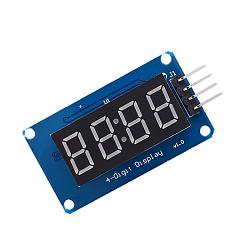Butterfly keyboard on 1995 IBM ThinkPad 701c. 0:19 video:
More: https://en.wikipedia.org/wiki/IBM_Th...erfly_keyboard
Previously:
Air traffic controller keyboard - photo



Butterfly keyboard on 1995 IBM ThinkPad 701c. 0:19 video:
More: https://en.wikipedia.org/wiki/IBM_Th...erfly_keyboard
Previously:
Air traffic controller keyboard - photo

New plans added on 01/06/2025: Click here for 2,686 plans for homemade tools.
baja (Jun 18, 2019), Scotsman Hosie (Jun 21, 2019), Seedtick (Jun 17, 2019), Toolmaker51 (Jun 22, 2019)
The single biggest breakthrough in reliable keyboard/keypad functioning, was the development of the scanning keyboard, by Cherry Keyboard co. No more holding your mouth just right, to avoid getting a short line of repeated characters, due to key bounce. No more trying to time a sampling strobe, to get a 'clean read.' Keypad switches were free to bounce all they wanted, once the matrix latches set, and the comparative counter took off running. Amazing how such an obvious solution – after the fact – eliminated the heartache of keyboard entry, for an entire industry.
Toolmaker51 (Jun 22, 2019)
I changed my method of scanning on small x by y keyboards to a static watch long ago (like in 8051 time) to save power and realtime. Drive either all the rows or columns low and set the other half as inputs (with pullups, of course). Enable interrupt on input change. Wait.
When someone presses a key, the interrupt routine swaps x & y input vs output, calculates and reports the key pressed, THEN starts the debounce timer to rearm interrupt. No scanning so no EMI and no wasted power.
There's a nice chip, the TM1637 that scans a keyboard AND drives 6 LED 7 segment displays at the same time. You talk to it with a modified I2C (to avoid royalties).
The chip is often found driving a cheap LED display with no keyboard (about $1 on eBay)

Scotsman Hosie (Jun 22, 2019)
There are currently 1 users browsing this thread. (0 members and 1 guests)
Bookmarks